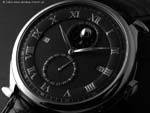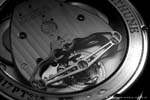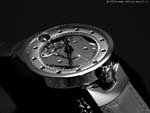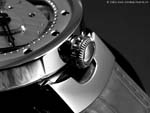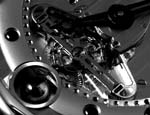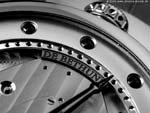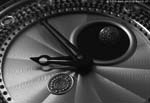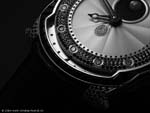The
X-Files
The Quest for a Mechanical Rapprochement of Quartz-Accuracy
An inside report of De Bethune SA, La Chaux l'Auberson
by Magnus Bosse, November 2006
Part
4
click on small images to view full-size ones!
4.
The current De Bethune Collection -
Part I
What is quite remarkable for such a young brand is the
advanced maturity and coherence in both exterior and interior. Right
from the start, the brand focussed on the characteristic and, what
I particularly like, splendid case design with the unique ogival (or,
as some call it: torpedo) lugs attaching
the straps to the flat cases. Dial and hands are hand-crafted in best
watchmaker's tradtion and apperance, but still distinctively speak
a De Bethune language. The movements were mainly vintage treasures
such as Venus 179 Chronographs or A. Schild 2072 automatic movements,
but always reworked, improved and embellished to compliment their elaborate
couture.
While not as "out there" as most contemporary offerings,
the initial appearance of an early De Bethune watch is seductive, mysterious
yet self-confident and not without taste. An example of a Split-Second
Chronograph with Perpetual Calender and large date, called DB-CS1:
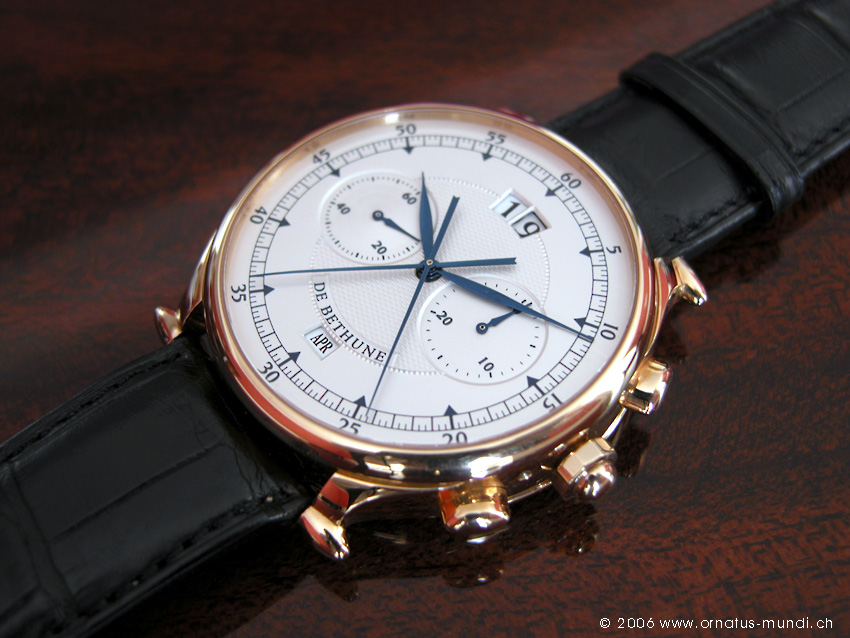
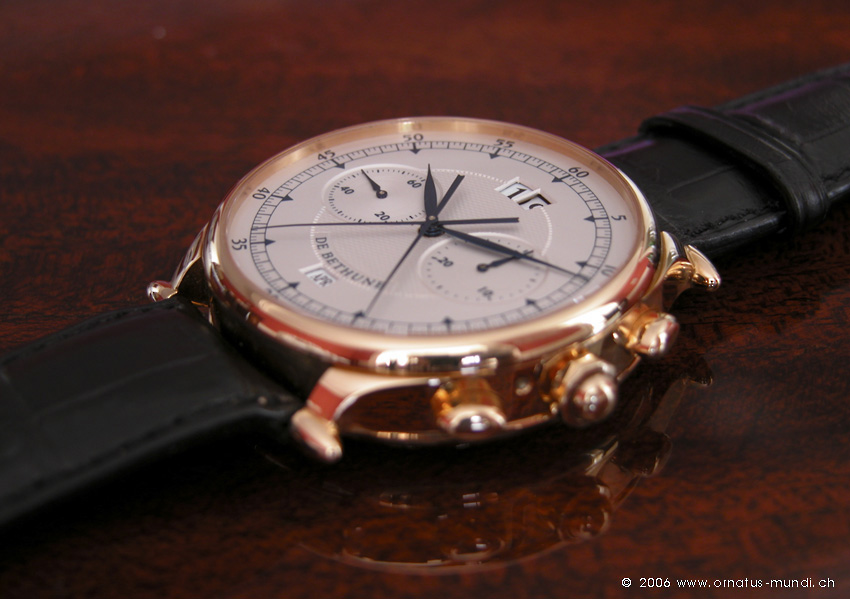
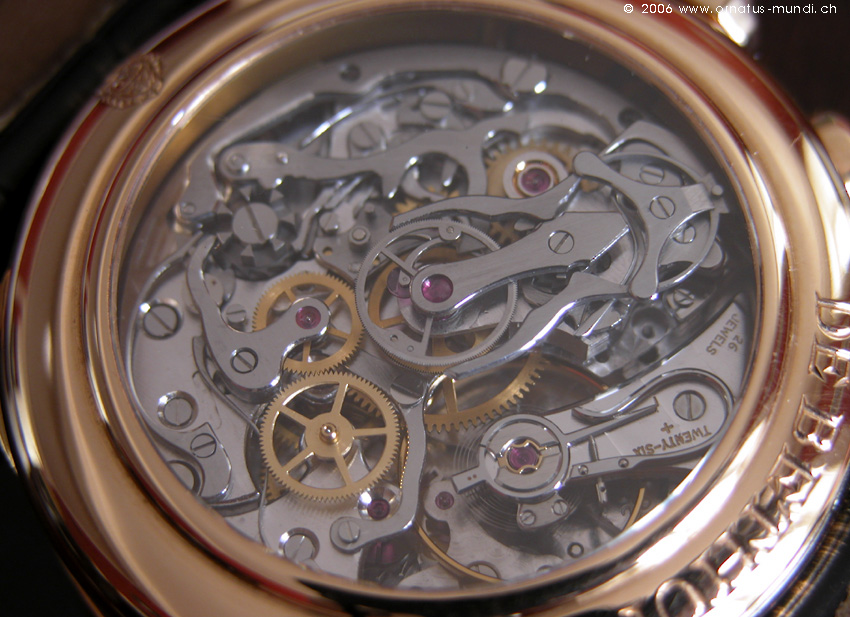
Following on the initial collections, De Bethune broke entirely new ground with the DBS (see further below), which shocked the public with its radically modern design, resembling a horseshoe, which nevertheless is in keeping with the imprint of the De Bethune style. That this was only the beginning, became clear at Basel 2006. Ever since then, De Bethune evolved into a creative hothouse veritably pushing the aesthetical as well as the technical boundaries of the finest watch culture. With its holistic approach, the company stays true to its initial concept.
In the following, I want to lay out the aesthetical development of De Bethune collection. All watches are currently in production (or are released soon), offering the choice to select a specific "De Bethune Vintage" of your liking. For conceptual reasons, I split the presentation of De Bethune's watches into two parts. In this first part, the
- DB15 & DB17
- DBS
- DBL
will be shown. The Digitale, the new GMT Automatic and the Maxichrono follow in part 5 of this article (link at the end of this part!).
With the DB15 watch De Bethune for the first time gave a clear sign that something well worth observing is about to come: Presented in 2003, this watch carried many cues to the future: The new, flat heart-shaped calibre, the IOS and, on the dial, the unusual sperical Moonphase indication. The cases were 43mm in diameter, and only 13mm flat, and came in red gold and platinum.
The moon naturally catches one's eyes, and nearly hides the perpetual calender. A date dial serves as optical counterweight to the moon. Weekday and month can be read through windows at 9 and 3 o'clock, respectively, and the leap year indication is nicely integrated into the sky surrounding the moon. The dials came with or without the sunray patterns:
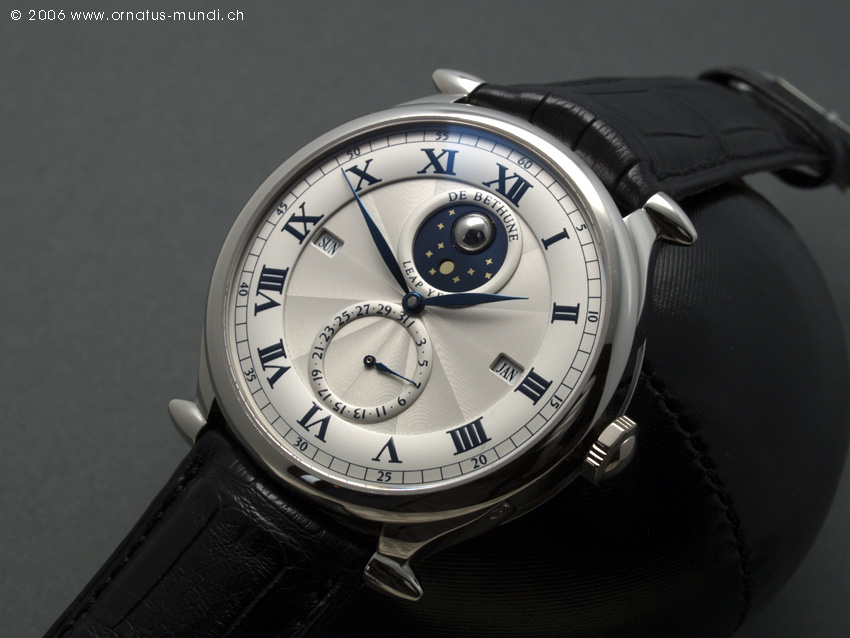
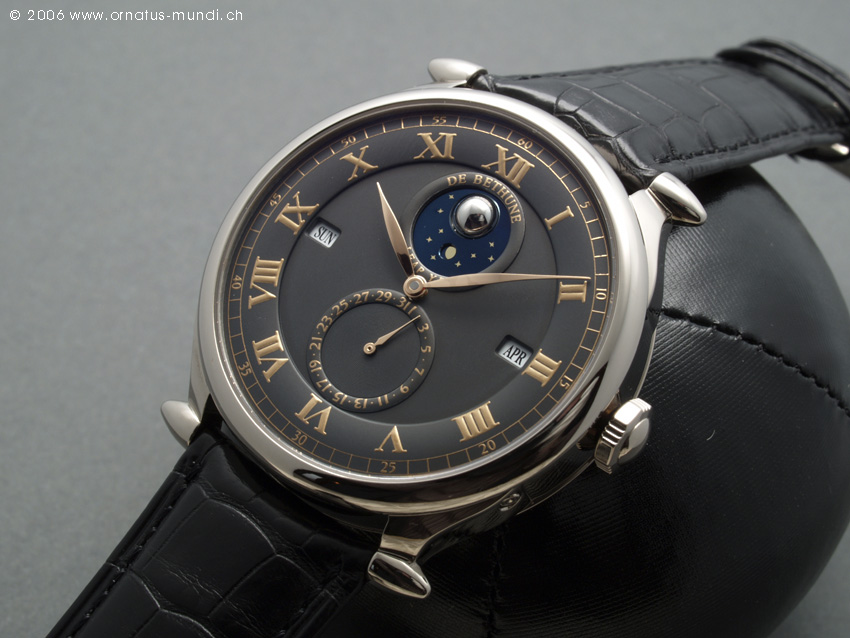
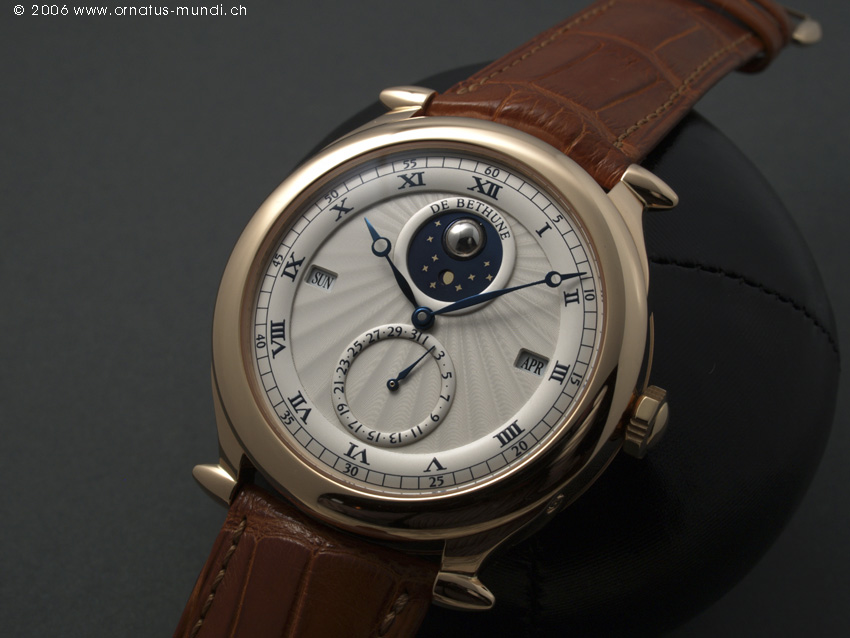
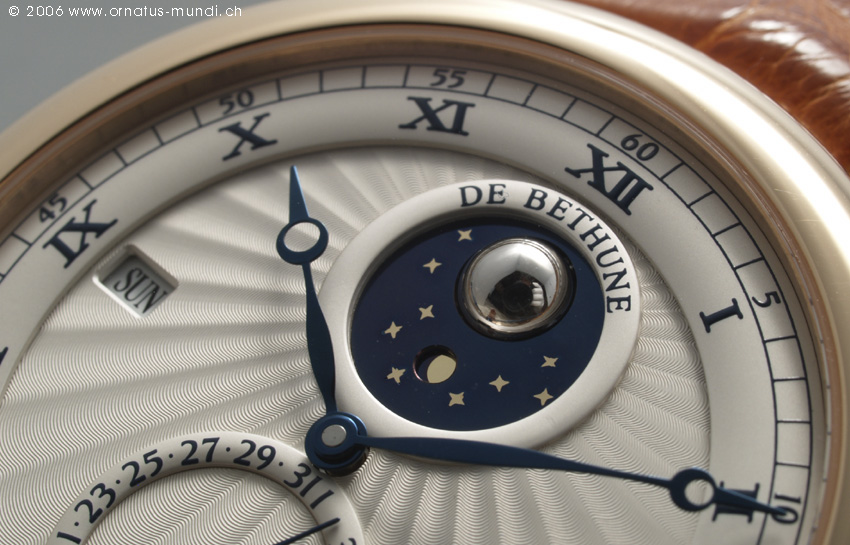
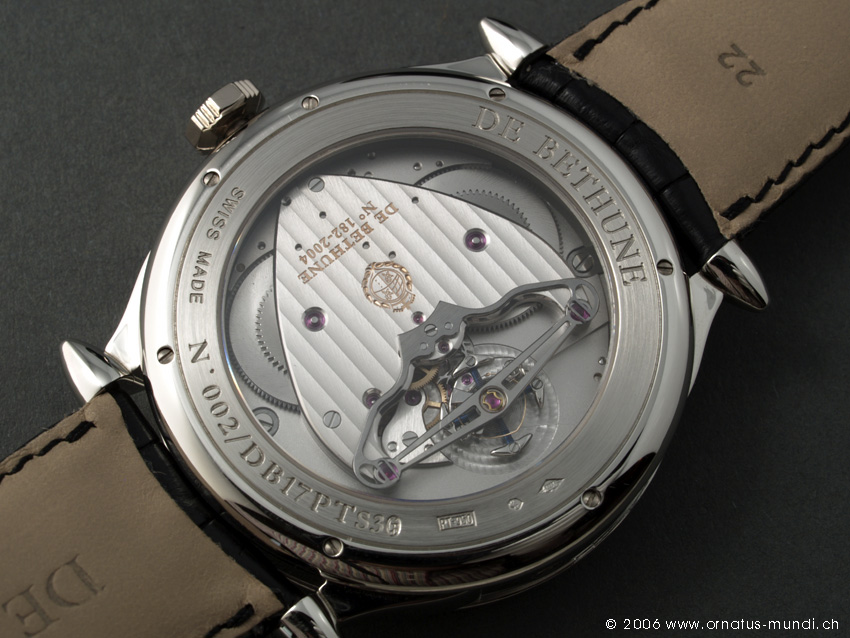
Much as the Aston Martin DBS was a departure from the classic, elegant DB-4, 5 and 6 gentlemen's cars (which are well known from James Bond movies), the De Bethune DBS broke new ground for the manufacture. It introduced the "horseshoe" case shape with the ogival lugs confined to the lower area of the case, whereas a screw-bar to fix the strap is placed on the upper one, where also the (screw-in) crown is located. The case dimensions are 45mm x 42.5mm with a tickness of 11mm and comes in either platinum or a white gold/palladium alloy.
What strikes here is the tasteful integration of case, movement, moonphase and dial. It is difficult to tell where the one ends and the other begins. This melange is incredibly difficult to produce, as multiple critical junctions have to fit smoothly with tight tolerances. Beneath this, it is also a brilliant stage for the demonstration of finishing skills! Still, the watch creates the impression of a very tasteful aesthetic artwork, and intellectually this integration very subtely pushes the concept of a watch as a holistic entity: this is more than simply a skeleton dial. In my opinion, De Bethune delivered a masterpiece in watchmaking art, combining playfulness with a clear design language and a serious horological approach.
This watch originally was created as a promise to His Highness Prince Albert of Monaco, to provide a piece unique to be sold at the Only One Auction 2005 in favour of the Monegassian Association against Muscular Dystrophy. Indeed, De Bethune kept its promise and delivered the prototype of this watch. The final version shows several further developments and refinements, such as the IOS 3 system, the triple para-chute and the heat-blued hour indications:
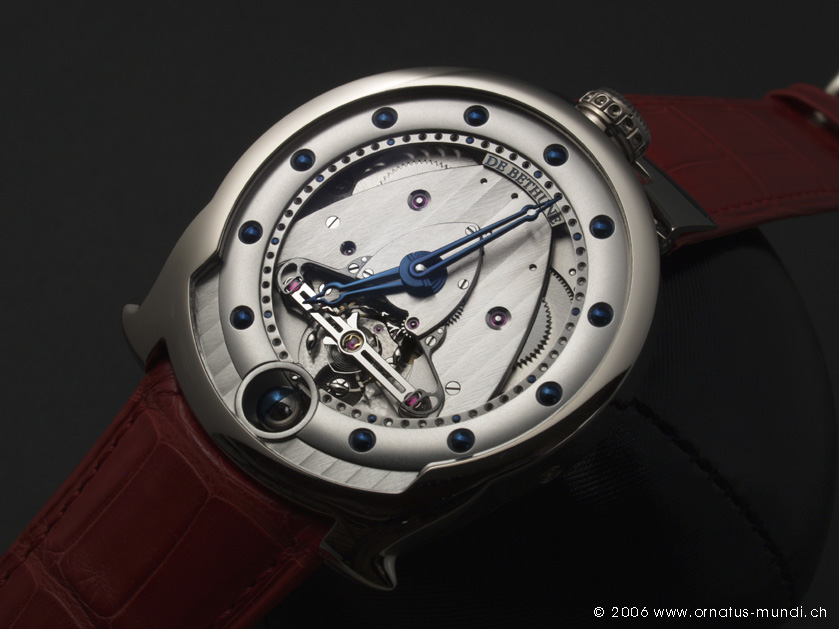
While most of the movement is visible on the front, De Bethune opted to include a power reserve indication on the back. It pretty much resembles a fuel gauge in a car (again Aston Martin calling?) and is mesmerising to look at. Note as well the hinge and the screw-bar attaching the upper strap to the watch:
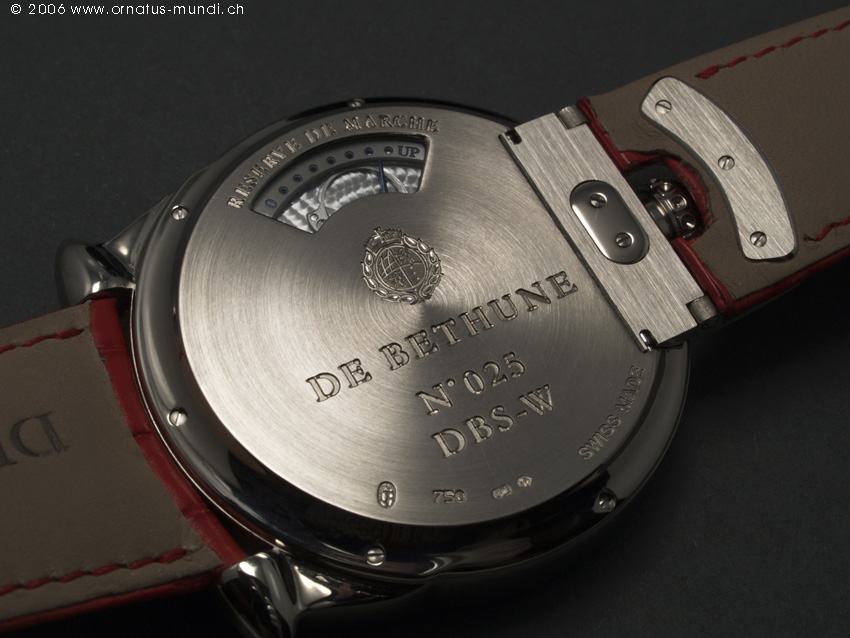
"Proof is in the Pudding", so the saying goes. In my description about the DBS I used a vocabulary like "stage", "art", but also "concept of a watch as a holistic entity". If you see the following pictures, I think it becomes clear that such attributes are not un-substanciated.
The DBL is a feminine interpretation of the DBS as a jewellery timepiece. It is important to think about these two terms as one to really understand this piece. The stage I mentioned already is the scenery of a quite dramatic play of the dark and the light forces, if I may say so, and alone the fact sheet is impressive: Altogether 520 diamonds are placed in highest gem-setting craftsmanship (not including the 109 baguette-cut diamonds adorning the case!) around a golden, finely hand-guilloched dial. An internal bezel set with small black stones provides the pattern upon which the 12 white sapphires stick out to indicate the hours. I find the layout of this ring, how it is enfolded by the signified bezel which itself dramatically unfolds into the power reserve window between 4 and 8 o'clock, simply mid-blowing. De Bethune created a lady's watch distinct from the man's version, both aesthetically and technically, chapeau!
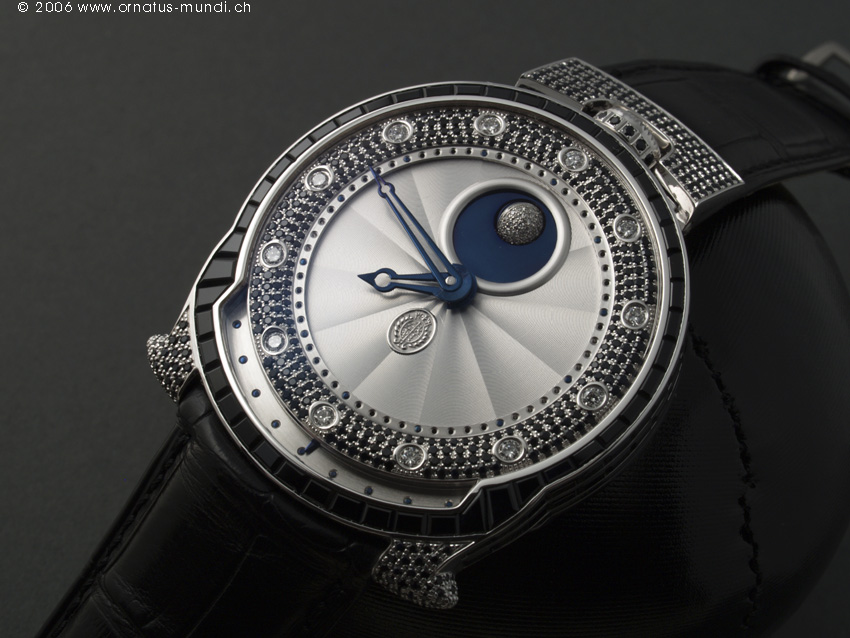
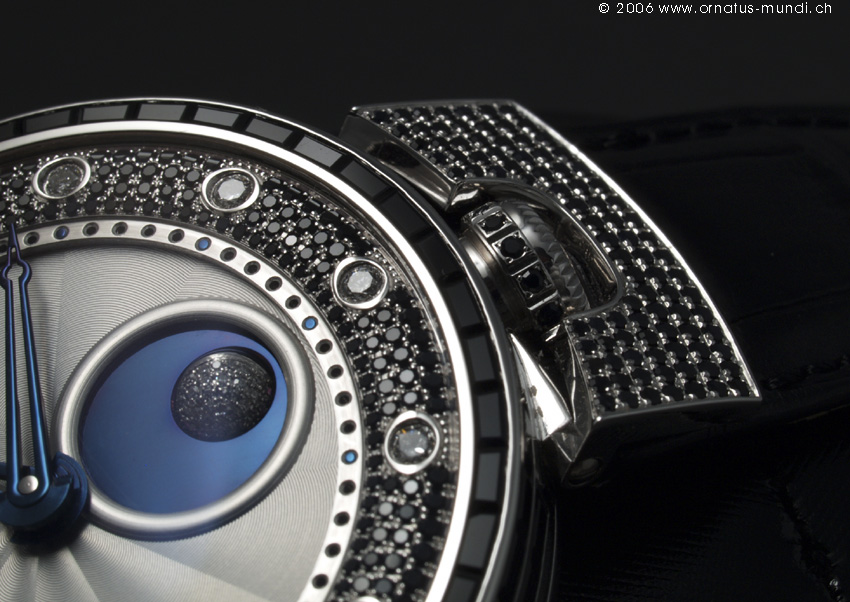
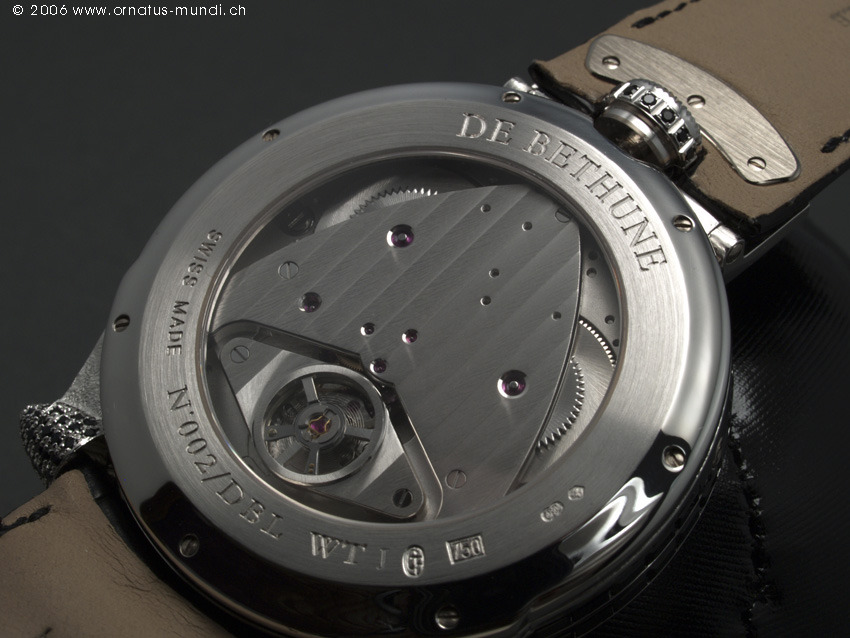
Part
1 - The Introduction
Part 2 - Watchmaking at De
Bethune today
Part 3 - De Bethune's bespoke
movements and its unique "spider" balance assembly
Part 4 - The current De Bethune collection - Part
I
Part 5 - The current De Bethune
collection - Part II
